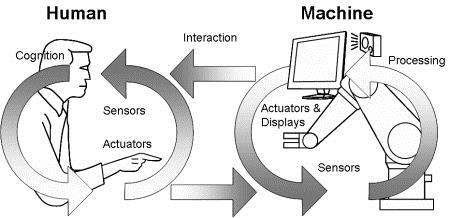The Critical Weakness of Form I-9 Compliance: Humans

Onboarding an employee is an extravaganza of forms for data collection for the various systems employers use to report upon and process information for their employees such as payroll, organizational design and performance management. These systems require the simple collection of data that the employee may provide in whatever fashion the employer deems most effective. There is one form that is part of the on-boarding process however that, in reality, is not a form at all, but an entire process unto itself: The Form I-9.
The Form I-9 represents the “Employment Verification System” established in 1986 by the employer sanctions and nondiscrimination provisions added by the Immigration Reform and Control Act (IRCA). The rules and regulations of IRCA, along with later guidance issued by the Immigration and Customs Enforcement ( ICE) and the Office of Special Counsel (OSC) of the Department of Justice, have made it clear that HOW you go about the completion process of the Form I-9 and E-Verify case submission is just as important as WHAT data goes into this Form and system.
Herein lies the critical weakness of every online I-9 system that employers use to assist with data collection for the Form I-9. While online systems can employ data validation (to a point) to ensure that required fields include data, and that only List B documents are listed under List B, and certainly can help improve the employers ability to reverify timely, these systems cannot control the human interactions that control HOW the data for the Form I-9 was obtained such as:
How was the Form I-9 included in the hiring process?
- Was it before or after the offer was extended?
- Was information provided by the worker considered in the hiring process?
- Was the Form introduced into the process consistently for all workers?
How was the worker informed about the Form I-9 process?
- Did the employer tell them which documents to bring to prove identity and work authorization?
- Did the employer suggest specific documents?
- Did the employer inform all employees consistently?
How was Section 1 Completed?
- Was the information provided directly by the employee or their preparer/translator only?
- Was information in Section 1 pre-populated by information previously provided and entered into an HR/Payroll System?
How are individuals completing Section 2 on behalf of the employer trained on the I-9 Process?
- Did the employer ensure that only those who are knowledgeable about compliant completion of the Form I-9 are completing Section 2 on their behalf?
- Does the employer conduct regular training for these individuals to keep their knowledge and skills up to date?
- Does the employer provide a resource for these individuals to go to in the event they have questions?
How are cases entered timely in E-Verify (if employer is participating)?
- What is the process to ensure that cases are entered into E-Verify within three days from the first day of work for pay?
- Are start dates being impacted if the employee does not have documentation for Section 2 on their start date?
- How many people are entering data that generates a case in E-Verify? ( this could be many in the case of online I-9 systems)
- How often are these people trained? (and how is the employer certain that they are performing required training as specified in the E-Verify Memorandum of Understanding (MOU).
How are Tentative Non Confirmations (TNC) handled?
- Is there a specific person identified to receive TNCs generated by cases in E-Verify where data matches cannot be found?
- How can you ensure that workers are receiving TNCs immediately?
- How do you handle situations where an authorized worker cannot easily resolve their TNC due to government systems issues?
All of these “How’s” happen outside of the span on influence of an online I-9 system. These systems, which really are just efficient repositories for data, can fail horribly when not implemented properly. Ensuring that the answer to how the above items are executed is compliant with IRCA rules and regulations, employers must implement supporting systems of communication, training and audit to manage and control the human element of the Form I-9 process.
To learn more about our processes and procedures to support your I-9 compliance, please contact the Maggio Kattar team member you work with or call our office to speak with a member of our Compliance Team.
